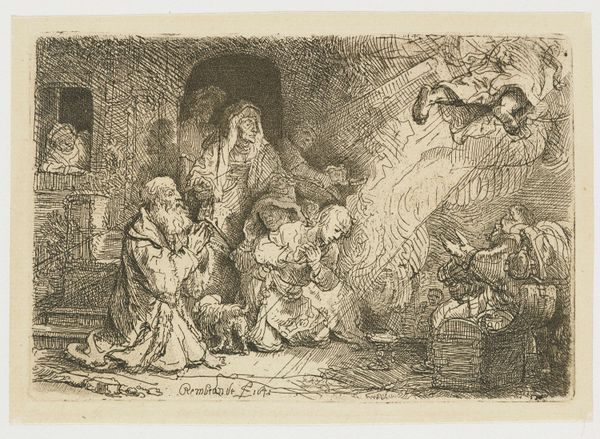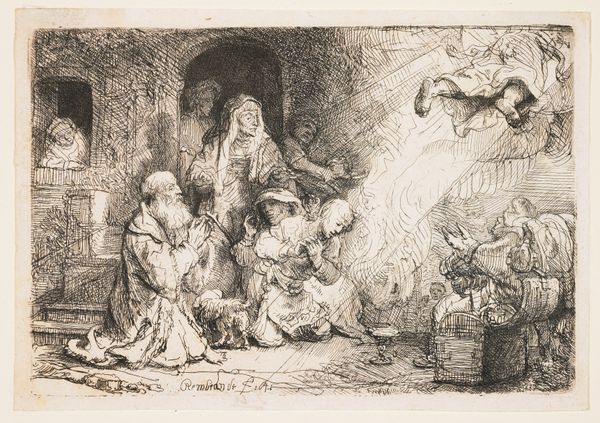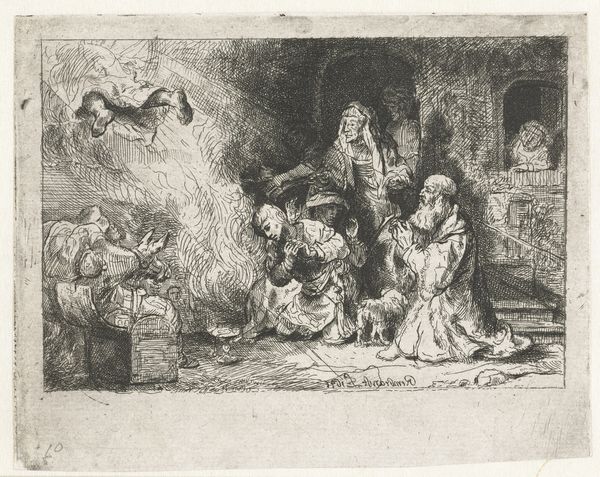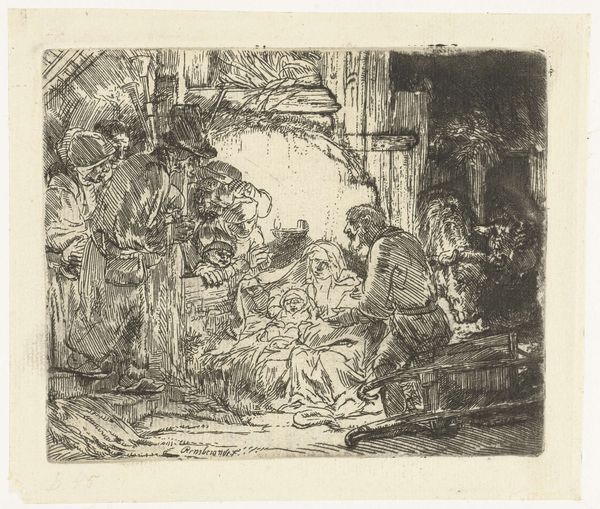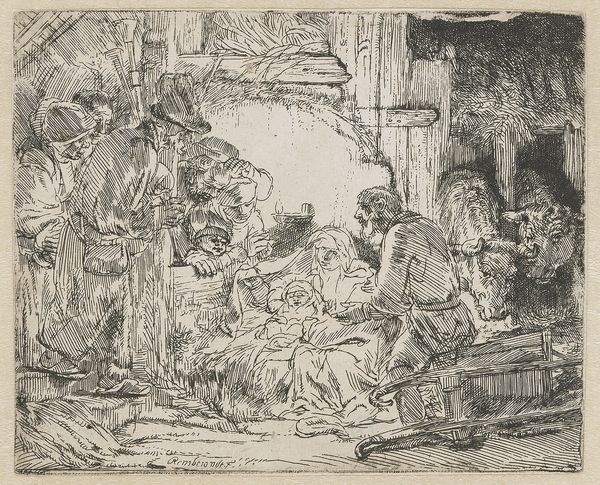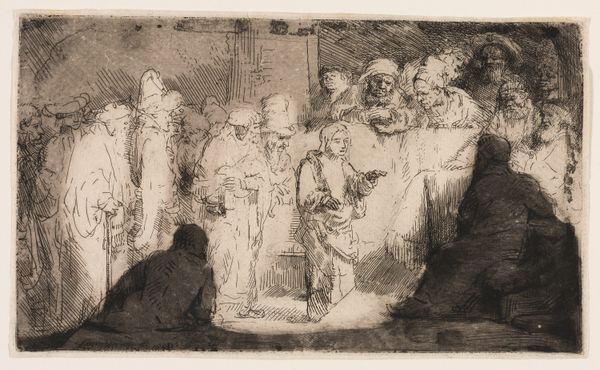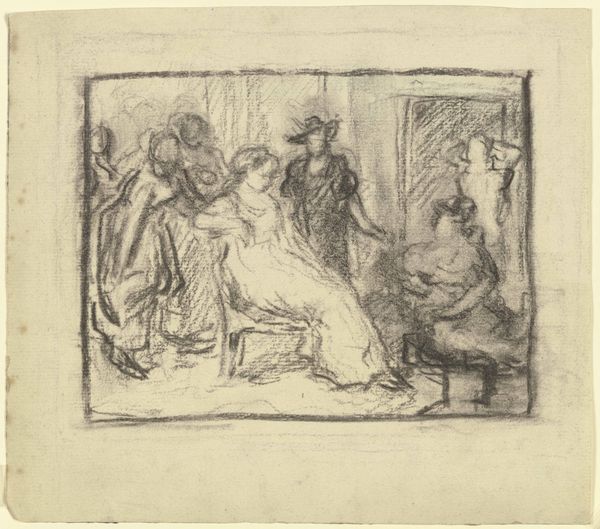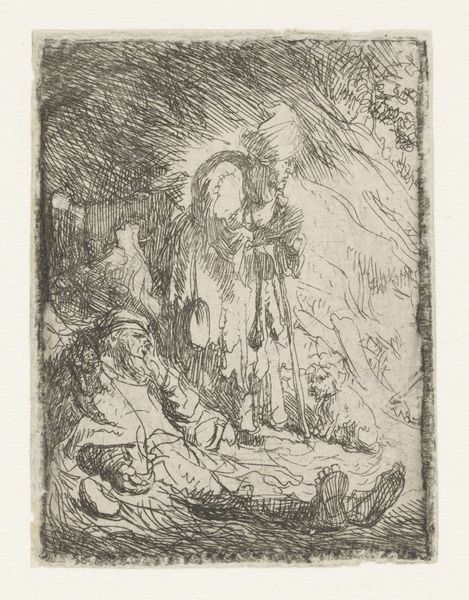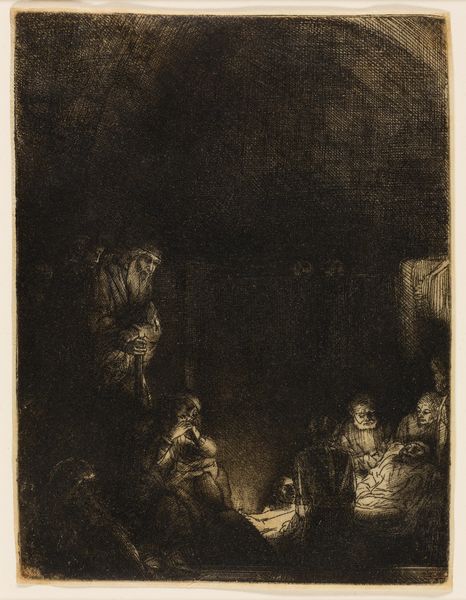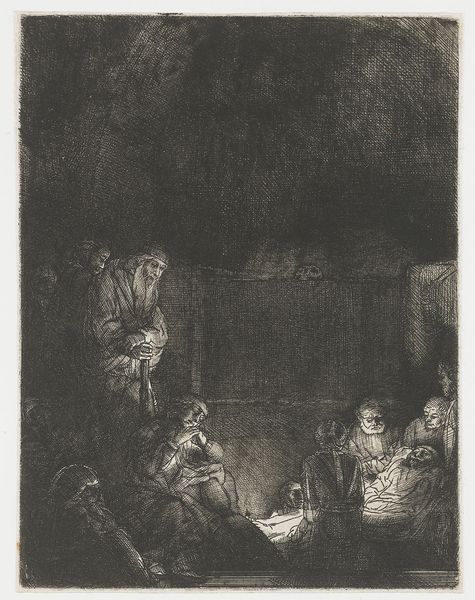
The Angel Departing from the Family of Tobias 1641
0:00
0:00
drawing, print, etching
#
drawing
#
baroque
# print
#
etching
#
figuration
#
history-painting
#
angel
Dimensions: Sheet (Trimmed): 4 1/8 × 6 1/8 in. (10.5 × 15.5 cm)
Copyright: Public Domain
Editor: So, here we have Rembrandt van Rijn's etching, "The Angel Departing from the Family of Tobias," created in 1641. It's an intimate scene, rendered in such fine lines... The figures are really expressive, full of emotion, but I'm curious – how do you interpret this work, especially within its historical context? Curator: It's tempting to simply see this as a biblical narrative, but situating it within Rembrandt's world reveals layers of complexity. Think about the Dutch Republic in the 17th century – a burgeoning commercial power, but also grappling with religious and social hierarchies. Consider, for instance, how Rembrandt uses light. What does it illuminate, and what does it leave in shadow? The Angel is central but blurry. Where is the real focus for you? Editor: That's a good point. My eye is drawn to the kneeling figures. The etching captures their humility and devotion. It also hints at the complex relationship between religious authority and individual interpretation at the time. Curator: Exactly! Now, look at the depiction of the family. What societal power dynamics are being reproduced here? Who gets to speak? Who is silent? Considering the etching's role in disseminating religious narratives to a wider audience raises vital questions about the construction of identity and belief. Do you think it serves to uphold existing norms, or does it challenge them in any way? Editor: It makes you wonder if Rembrandt was subtly critiquing or at least questioning the roles within the family, and by extension, within Dutch society. Curator: Precisely. Engaging with these complexities helps us move beyond a simple reading of religious iconography. It allows us to understand art as an active participant in shaping cultural consciousness. Editor: This has completely shifted my perspective. I now see it not just as a biblical scene, but as a commentary on 17th-century Dutch society. Curator: That’s the beauty of art history; it allows us to have dialogue with the past in ways that can reflect back to the present.
Comments
No comments
Be the first to comment and join the conversation on the ultimate creative platform.

